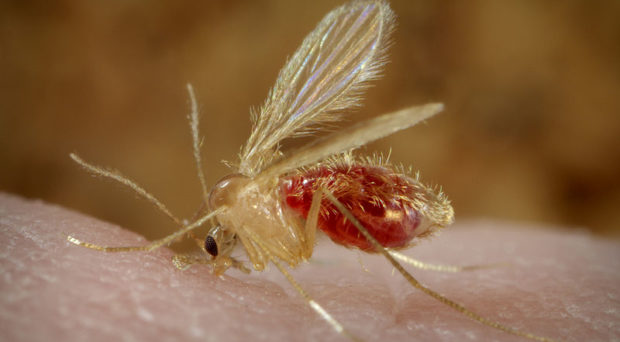
Cutaneous leishmaniasis (CL) is a skin condition caused by a parasite transmitted to humans by sandfly bites. In Morocco three types of this parasite are present: Leishmania tropica, major and infantum. Leishmania major is a parasite that circulates in a reservoir of wild Saharan rodents and is only accidentally transmitted to humans.
CL is very common in Errachida Province in the South-east of Morocco. As there is no regulated waste management in these rural areas, rodents are attracted to human settlements. The lack of individual protective measures against flies makes this environment conducive to the spread of disease.
In general, CL is given low priority by policy makers due to the perception that it is just a self-healing skin disease.
A large Zoonotic CL epidemic took place between 2009 and 2011 with more than 10,000 cases. This was combatted using poisoned wheat bait. Unfortunately, today there are no more funds available to sustain the fight against rodents and to manage the environmental factors, so as a consequence there may be a new increase in the rodent population and with it a new outbreak.
In general, CL is given low priority by policy makers due to the perception that it is just a self-healing skin disease. However, after healing, the CL ulcers leave indelible unaesthetic scars that cause a lot of psychosocial distress in affected people, especially young women. This neglected tropical disease mainly affects the voiceless poor population living in remote exposed areas in Morocco.
Understanding the psychosocial dimension
I got involved in the fight against CL when I was in Errachidia Province in Morocco, and had to coordinate the response to the epidemic. Later, with the help of my promoters in the Institute of Tropical Medicine in Antwerp, I decided to document the burden of CL in my country in much more detail, especially the psychosocial and the biomedical dimension of this disease.
I started qualitative research on the social representation of scars through focus groups discussions and interviews with the general population and former CL patients living in CL endemic areas (Errachidia and Tinghir provinces).
In this paper published in Infectious Diseases of Poverty, we explored this psychosocial dimension in a study carried out in boarding schools of Errachidia province, Students were asked to answer several questions by writing, ending with one open question about the probable psychological state of the person (woman or man) affected by CL scars. Twenty percent of all the students had been personally affected by this disease and had scars. There was a lot of concern about CL even if it was widely understood that CL is not a life-threatening disease.
Twenty percent of all the students had been personally affected by this disease and had scars.
For most of them, the indelible CL scars lead to self-stigma and social stigma, specifically for girls who are worried about losing opportunities for a good marriage due to CL scars that would affect their physical appearance and attractiveness. Some respondents considered the scars as a curse.
To our knowledge, this is the first study documenting the psychosocial effects of localized CL scars in an adolescent age group. We believe that our findings show how important it is to pay attention to the psychosocial aspect of this disease among adolescents. For this age group the indelible CL scars on the visible parts of the body, especially on the face, lead to substantial fear and worries.
Preventing the avoidable burden of zoonotic CL and mitigating its dermatological and psychosocial consequences should be a priority for health authorities in this region. We hope the readers of our article will no longer consider the localized Cutaneous Leishmaniasis just as a “minor” self-healing dermatological problem but rather as a social disease especially affecting the poorest young women in Morocco.
Comments